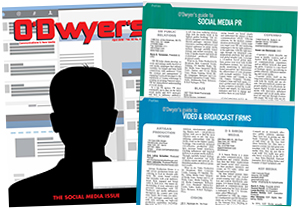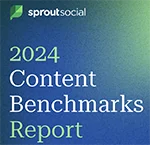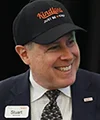|
|
|
|
People are using social media to learn about the news before it is actually shared on the news. More than half — 51 percent — of journalists source their information shared on the news from social media, meanwhile 30 percent of U.S. adults turn to Facebook to learn about current events and 50 percent of them will share that news on their social networks. This means it’s important for brands to have a social media presence to get noticed and to be seen as relevant.
Tweet carefully
Are tweets the new car chases? Los Angeles television news outlets are notorious for broadcasting car chases; they do this because a car chase in Los Angeles leads to a bump in viewership and ratings. Donald Trump’s tweets, Kanye West’s Twitter fight with Wiz Khalifa and request for a loan from Mark Zuckerberg, or Kim Kardashian’s latest nude pic tweet are the new car chase: people are talking about them and the news cannot stop covering them. The news cycle of Kim Kardashian’ nude photo that was posted on Instagram and Twitter on March 7 lasted three days, with coverage from “Entertainment Tonight,” “The Talk,” The Telegraph, “Today Show” and several others.
Donald Trump, on the other hand, is consistently dominating the news, not only with his favorable polls from the public but also with what he’s posting on Twitter. A recent issue of Rolling Stone listed the meanest insults that Trump tweeted, one of them being “The failing @WSJ Wall Street Journal should fire both its pollster and its Editorial Board. Seldom has a paper been so wrong. Totally biased!”
It’s not only magazines or national television news programs that are including tweets in their news content. Mitt Romney recently read aloud tweets about himself for “Mean Tweets,” a regular segment on the “Jimmy Kimmel Live!” show. Time and time again, the media is turning to Twitter and other social networks to find and share news, and appeal to its audience.
Speaking of the 2016 presidential election, a local Minnesota newspaper, St. Cloud Times, polled its Twitter followers on whether or not they caucused and which party they caucused for during Super Tuesday 2016. Nearly a quarter of respondents — 21 percent — said they caucused for GOP, 20 percent caucused DFL, and 57 percent did not caucus. They engaged their social media audience and could have used the data for a story on how Minnesota residents caucused on Super Tuesday.
In 2014, word about the violent riots in the streets of Caracas, Venezuela broke globally via Twitter rather than the usual news outlets such as CNN or Fox. People across the globe were tracking what happened in real-time via Twitter before it was shown on TV, and press even utilized videos or photographs shared via the 140-character social network before having crew on the ground. Venezuelan citizens kept track of what was happening via social media rather than national news.
Live from the red carpet
Awards season was recently in full bloom with the Golden Globes, Screen Actors Guild Awards, The Grammys, and The Academy Awards. Not only are traditional news outlets present and covering the awards shows, social media influencers are suited up and engaging with stars to give their fans insider access to the red carpet. Gabbie Hanna from “The Gabbie Show” attended the 2016 Grammys and used Snapchat to interview and broadcast her experience at the awards show, while giving her fans and viewers a taste of insider access. Brands that want to elevate their visibility and awareness can utilize social media influencers to creatively broadcast a product launch, or use Facebook’s new livestream feature to unveil a new product. Snapchat also now offers custom geo-filters for $5.99, so companies hosting a tradeshow or conference can create one for attendees and social media users to help amplify awareness about the event.
YouTube is your friend
“The Ellen DeGeneres Show” averages around 3.9 million viewers per episode, so if you are a brand that wants to get noticed by Ellen, YouTube will be your best friend. The show favors family-friendly comedy and regularly turns to YouTube to find everyday people whose videos have gone viral and invite them to the show as guests. In 2011, Ellen noticed a viral video on YouTube of two sisters, Sophia Grace and Rosie, singing and dancing to a popular Nicki Minaj song. After viewing the video and noticing its viral nature, Ellen invited them on her show. Since then the show has invited several other video viral sensations to the show such as “Damn Daniel” and “Alex from Target,” among others.
Get social now
Want to be seen by the media? Want to put the news in your hands? You should use Periscope, Meerkat, or Facebook’s livestream feature to interview your team at events. During the Interactive portion of South by Southwest in 2015, tech savants learned about the livestream app, Meerkat, which basically launched at the popular Austin, TX event. Meerkat team members interviewed startups at SXSW, which allowed new users to see the livestream mobile app in action and fully understand how it can be utilized. Using Meerkat was a great way to give real-time insider access, before it was shared on the news, to individuals who could not attend SXSW.
Want to give social media fans additional insider access? Use Instagram to share behind-the-scenes images. Just make sure you have a solid and easy hashtag to follow and use, so social media users can follow along. Just as how news outlets sometimes share “kiss cam” moments, they now share public photos on social media to have more material for their coverage.
Get direct with the media
Using LinkedIn’s blogging feature, influencers can position experts on top in terms of getting noticed. Individuals using the feature builds their credibility, which makes them more interesting to the media. Three percent of journalists who use LinkedIn use it to identify and directly connect with experts. Several media and public relations groups exist on LinkedIn that help connect PR practitioners with the media. Twitter is also a popular tool to directly connect reporters; they occasionally post queries in search of experts on a certain topic. The media are getting savvy on social.
Don’t forget to be present
The popular phrase, “if you build it, they will come” does not work in the case of being social. Brands need to get conversational and be consistent with the content they push. They need to use data and analytics to understand what their audience wants to see. Companies need not only have a social media presence but also need to be present to get noticed.
Does the news actually cover the news or what people want? What’s shared on social media and what influences the press is news, because people are talking about it. Television producers are influenced by headlines tweeted by the news, which helps them determine whether or not a certain story is savory enough to be broadcasted to a national audience. The chatter from social media, or social media journalism, is news because it is what the public is discussing and wants to share. So be there.
* * *
Aljolynn Sperber is Director of Social Media at Marketing Maven.




 What if companies could harness the fury of online outrage into a force for good? This is precisely where companies can start turning the trolls into brand champions.
What if companies could harness the fury of online outrage into a force for good? This is precisely where companies can start turning the trolls into brand champions. Audiences interacted with brand content far more often on Facebook and Instagram in 2023 than they did via X (formerly Twitter), according to a report that tracked engagement trends across different social networks.
Audiences interacted with brand content far more often on Facebook and Instagram in 2023 than they did via X (formerly Twitter), according to a report that tracked engagement trends across different social networks. Can public relations help counteract the dissension fostered by the power of digital platforms to spread hate, fear and confusion?
Can public relations help counteract the dissension fostered by the power of digital platforms to spread hate, fear and confusion? The number of Americans who get their news from TikTok has quadrupled in the last three years, according to a recent Pew Research Center report.
The number of Americans who get their news from TikTok has quadrupled in the last three years, according to a recent Pew Research Center report.


 Have a comment? Send it to
Have a comment? Send it to 
No comments have been submitted for this story yet.